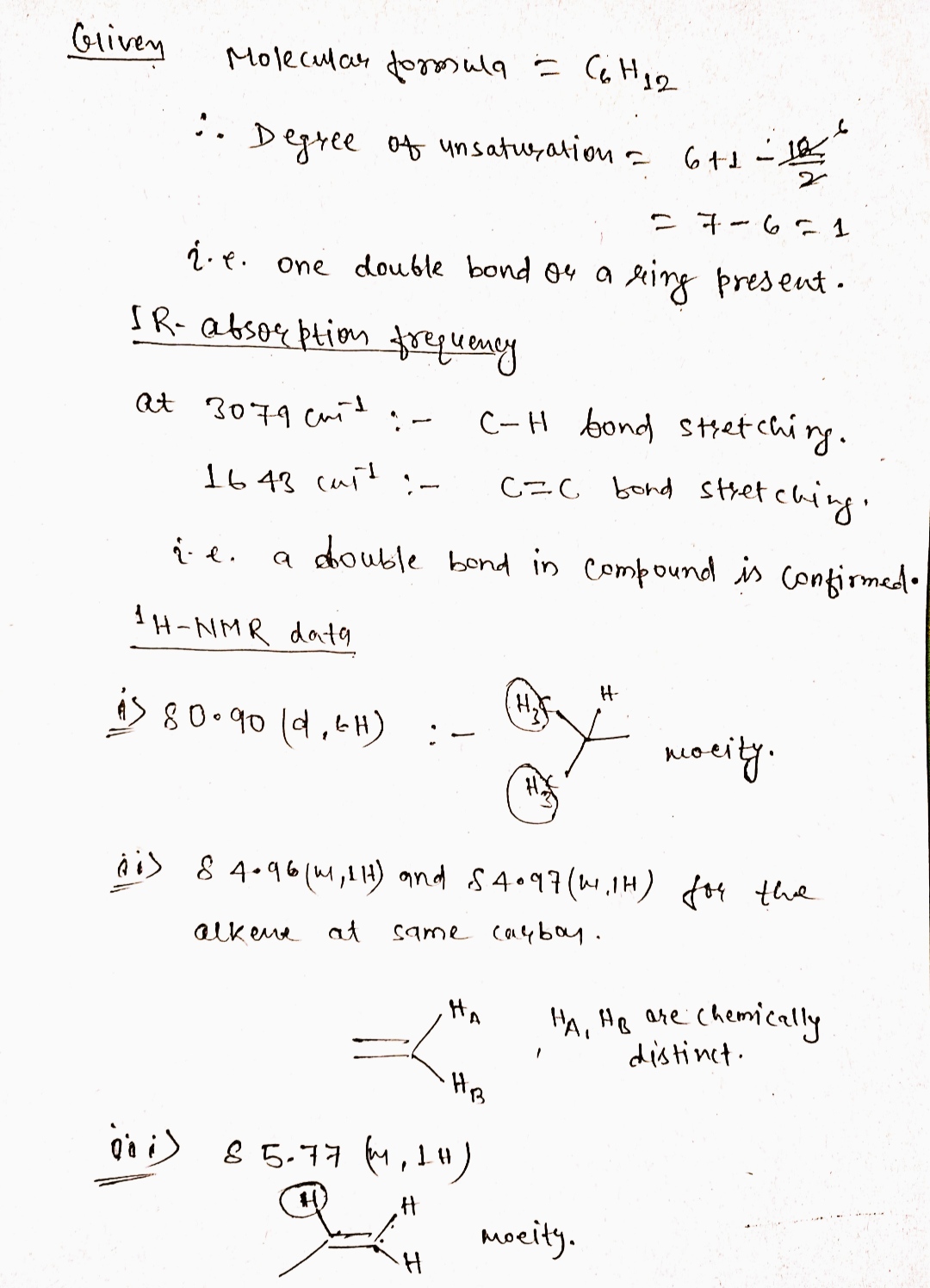Compound x (CeH12 reacts with BH3 followed by H2O2. NaOH, H20 to yield Compound Y (CgH140) as the major organic product. When Y is exposed to the reaction conditions that should be listed in Box z. the carboxylic acid product shown forms as the major product. The IR spectrum of X has prominent absorptions at 3079 cm-1 and at 1643 cm-1. The 'H NMR spectrum of X shows signals at 8 0.90 (d, 6H), 1.63 (m, 1H), 1.94 (dd, 2H), 4.96 (m, 1H), 4.97 (m, 1H), and 5.77 (m, 1H). The 13C NMR spectrum of X shows signals at 5 22.3, 28.2, 43.5, 115.4, and 137.9. Deduce the structures of Compound X and Compound Y, and indicate the yeaction conditions that should be written in Box Z. 1) BH, 2) H,O, N2OH, HO X (C,H12) Y (C,H140)
Compound x (CeH12 reacts with BH3 followed by H2O2. NaOH, H20 to yield Compound Y (CgH140) as the major organic product. When Y is exposed to the reaction conditions that should be listed in Box z. the carboxylic acid product shown forms as the major product. The IR spectrum of X has prominent absorptions at 3079 cm-1 and at 1643 cm-1. The 'H NMR spectrum of X shows signals at 8 0.90 (d, 6H), 1.63 (m, 1H), 1.94 (dd, 2H), 4.96 (m, 1H), 4.97 (m, 1H), and 5.77 (m, 1H). The 13C NMR spectrum of X shows signals at 5 22.3, 28.2, 43.5, 115.4, and 137.9. Deduce the structures of Compound X and Compound Y, and indicate the yeaction conditions that should be written in Box Z. 1) BH, 2) H,O, N2OH, HO X (C,H12) Y (C,H140)
Chemistry
10th Edition
ISBN:9781305957404
Author:Steven S. Zumdahl, Susan A. Zumdahl, Donald J. DeCoste
Publisher:Steven S. Zumdahl, Susan A. Zumdahl, Donald J. DeCoste
Chapter1: Chemical Foundations
Section: Chapter Questions
Problem 1RQ: Define and explain the differences between the following terms. a. law and theory b. theory and...
Related questions
Question
Please help

Transcribed Image Text:Compound X (CeH12 reacts with BH3 followed by H202. NaOH, H2O to yield Compound Y (CgH140) as the major organic product. When Y is exposed to the reaction conditions
that should be listed in Box z, the carboxylic acid product shown forms as the major product.
The IR spectrum of X has prominent absorptions at 3079 cm-1 and at 1643 cm-1.
The 'H NMR spectrum of X shows signals at 8 0.90 (d, 6H), 1.63 (m, 1H), 1.94 (dd, 2H), 4.96 (m, 1H), 4.97 (m, 1H), and 5.77 (m, 1H).
The 13C NMR spectrum of X shows signals at 8 22.3, 28.2, 43.5, 115.4, and 137.9.
Deduce the structures of Compound X and Compound Y, and indicate the reaction conditions that should be written in Box Z.
Z
1) BH,
HO
2) H,0 NaOH, ңо
X (C,H12)
Y (C,H140)
Expert Solution
Step 1

Step by step
Solved in 2 steps with 2 images

Recommended textbooks for you

Chemistry
Chemistry
ISBN:
9781305957404
Author:
Steven S. Zumdahl, Susan A. Zumdahl, Donald J. DeCoste
Publisher:
Cengage Learning

Chemistry
Chemistry
ISBN:
9781259911156
Author:
Raymond Chang Dr., Jason Overby Professor
Publisher:
McGraw-Hill Education

Principles of Instrumental Analysis
Chemistry
ISBN:
9781305577213
Author:
Douglas A. Skoog, F. James Holler, Stanley R. Crouch
Publisher:
Cengage Learning

Chemistry
Chemistry
ISBN:
9781305957404
Author:
Steven S. Zumdahl, Susan A. Zumdahl, Donald J. DeCoste
Publisher:
Cengage Learning

Chemistry
Chemistry
ISBN:
9781259911156
Author:
Raymond Chang Dr., Jason Overby Professor
Publisher:
McGraw-Hill Education

Principles of Instrumental Analysis
Chemistry
ISBN:
9781305577213
Author:
Douglas A. Skoog, F. James Holler, Stanley R. Crouch
Publisher:
Cengage Learning

Organic Chemistry
Chemistry
ISBN:
9780078021558
Author:
Janice Gorzynski Smith Dr.
Publisher:
McGraw-Hill Education

Chemistry: Principles and Reactions
Chemistry
ISBN:
9781305079373
Author:
William L. Masterton, Cecile N. Hurley
Publisher:
Cengage Learning

Elementary Principles of Chemical Processes, Bind…
Chemistry
ISBN:
9781118431221
Author:
Richard M. Felder, Ronald W. Rousseau, Lisa G. Bullard
Publisher:
WILEY